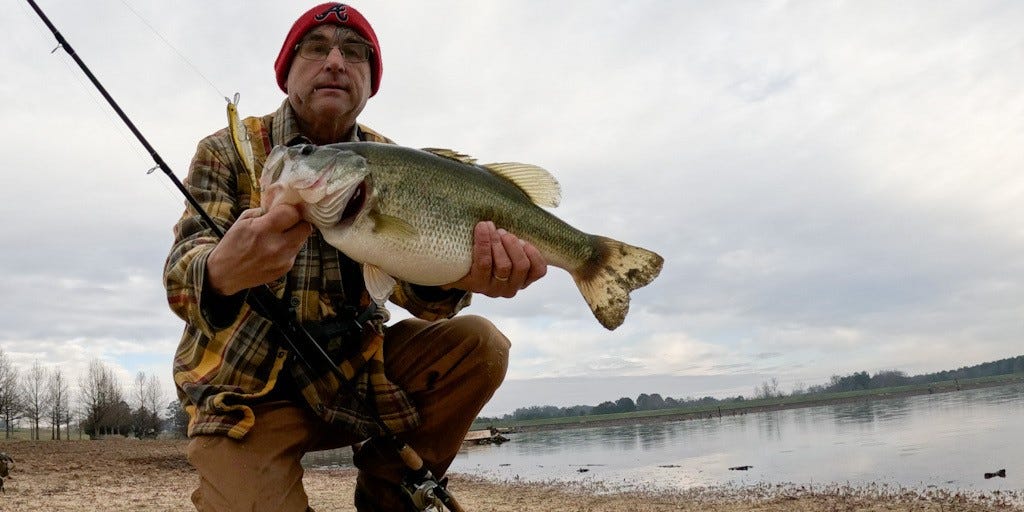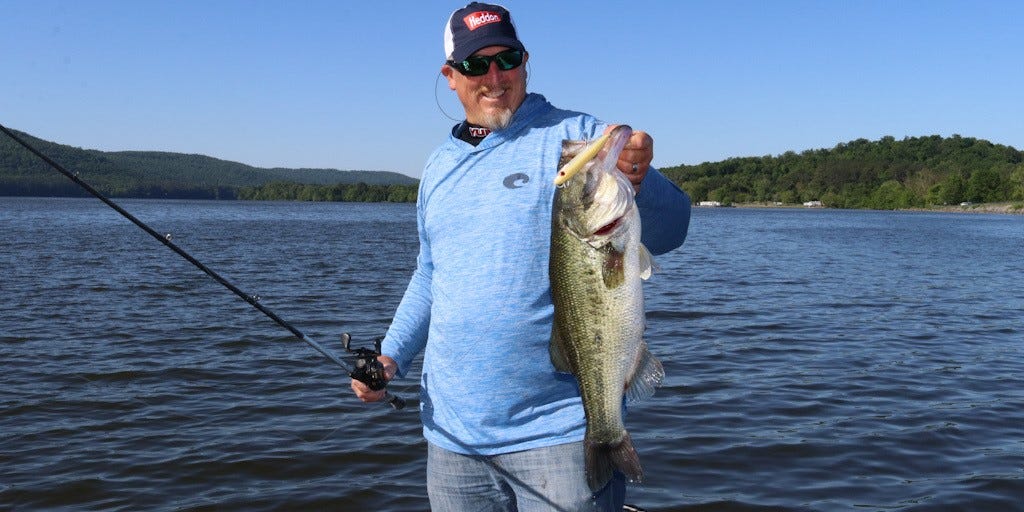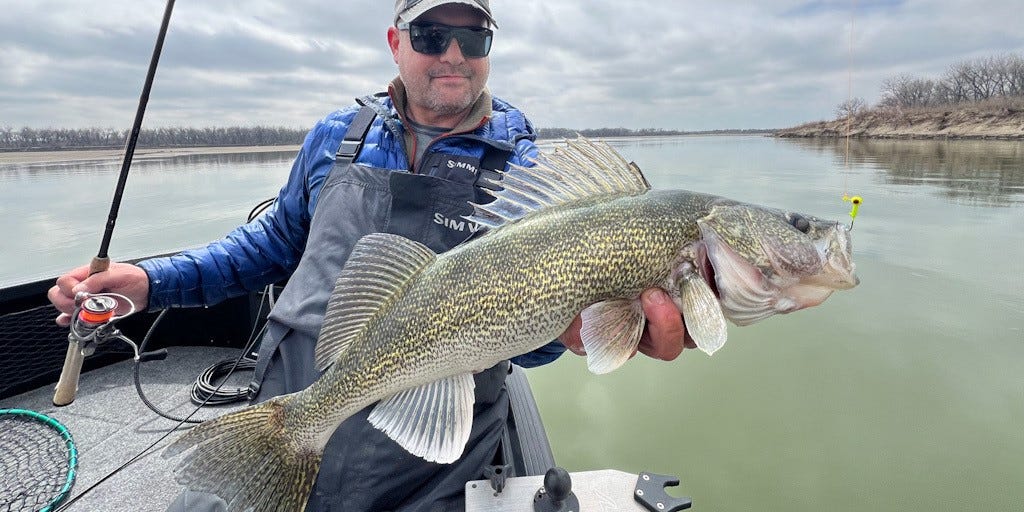- May 6, 2025
Shad Facts that Can Help You Catch More Fish
Understanding baitfish behavior equates to an improved ability to locate gamefish and match their favorite meals. Here’s what you need to know about shad biology.
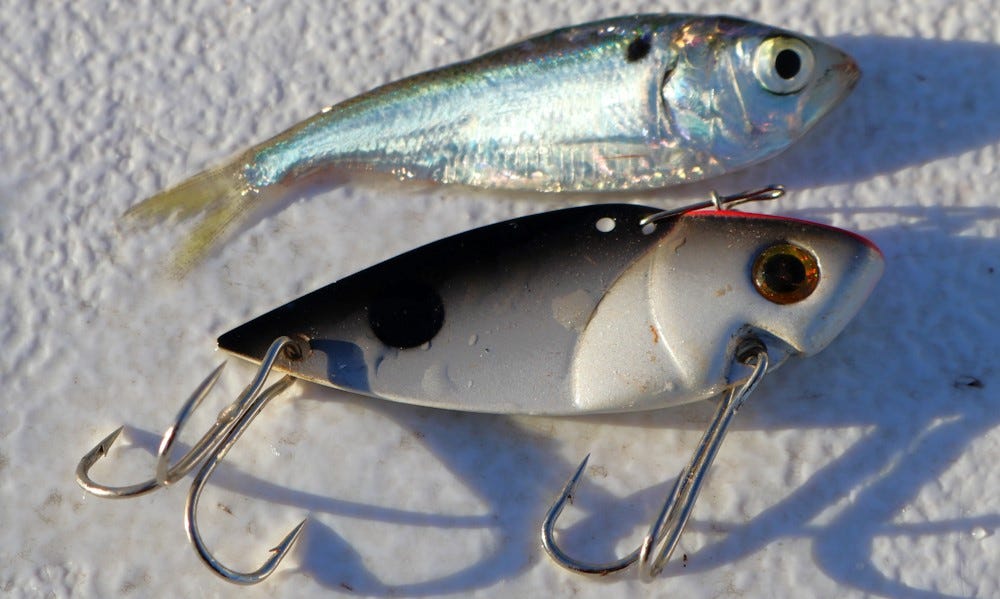

It’s a sunny late October afternoon on a Southeastern reservoir. The tree-lined shore shows hints of red and gold. About 40 yards from your boat, you see a dark patch in the water and slowly move toward it. The water begins to get nervous. First micro-ripples, but they quickly grow. Then the water explodes with dozens of bass gorging on the shad school. After several casts to heart of the melee with a BOOYAH Boss Pop you hook a small bass. You place your next cast 10 feet to the side of the commotion, and a 3-pounder loads on. In the next five minutes you catch one more good bass on a BOOYAH Double Willow Counter Strike Spinnerbait. Then, as suddenly as it started, the frenzy stops. Repeated casts to the area fail to draw a strike. So it is with bass schooling on shad. Sometimes the feeding frenzy lasts, and you can limit out on quality bass. Other times you zero. Despite all the reckless feeding, nothing draws a strike.
Throughout most states where they occur, gizzard and threadfin shad are an important, often the predominant, forage for bass―largemouth, smallmouth, spots, and Alabama―and many other sport fishes, such as walleyes and saugers, striped and white bass, crappie, and catfish. These soft-fin-rayed, high-caloric-density, relatively slender-bodied forage are easily ingested energy packets. They are commonly abundant. Standing crops of shad―gizzard and threadfin shad combined where they co-occur―can exceed 500 pounds per acre in productive systems. (Note that these estimates are from cove rotenone samples; the abundance is probably lower reservoir wide.) But there is a downside to these wonder fishes: Their abundances fluctuate, and sportfish populations can falter following shad winterkills or years of poor shad spawning and recruitment.
Gizzard Shad Biology
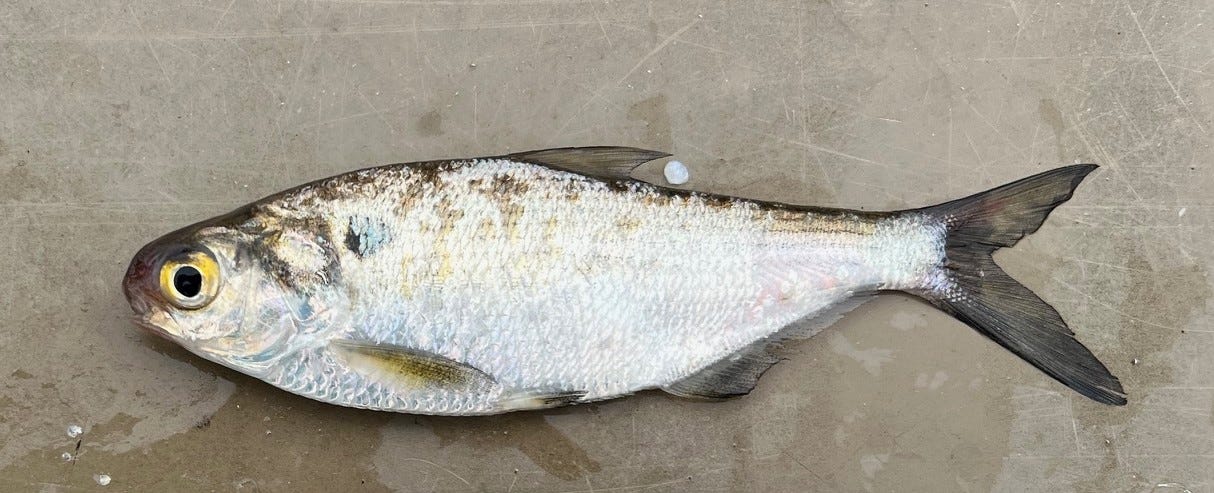

Gizzard shad spawn in the spring. Although biologists report a temperature range of 55 to 80 degrees and spawning lasting 12 to 15 weeks, peak spawning occurs around 68 to 72 degrees, shortly after the peak of bass spawning and, conveniently, at a time when the recently hatched shad will be useful forage for the young bass. However, rises in water level can also urge on the spawn. Spawning begins in early morning hours and ends shortly after dawn. They can spawn almost anywhere but usually near hard objects, even floating objects and on top of dense vegetation, where the sticky, sinking eggs can adhere. The eggs hatch in 2 to 4 days, depending on the water temperature.
Threadlike and 1/8-inch long at hatching, the larvae double in size every three or four days for the first couple weeks of their life. In many waters, the young reach 4 to 5 inches by fall of their first year and 7 to 8 inches by the fall of their second year. In other waters, however, gizzard shad can grow faster, even reaching 10 to 12 inches in their first year in hyperfertile Florida lakes. The value of gizzard shad as forage fish diminishes in lakes or reservoirs with fast growth because the shad are useful forage for only a brief portion of their life. Commonly gizzard shad live 6 to 7 years and grow to 14 to 16 inches, some reaching 20 inches.
Gizzard shad become sexually mature at about 6 inches. Fecundity (eggs per female) increases from 50,000 for small, young fish to more than 500,000 for a middle-aged fish and then declines. This can present a significant fishery management dilemma in highly fertile lakes with super-high standing crops of old, large gizzard that produce few offspring and, thus, have little value as forage. A standing crop of 1,000 pounds of shad per acre is of little value to sport fish if the shad are all 14-plus inches, and there are few forage-size shad.
Gizzard shad can survive temperatures as low as 39 degrees and as high as 95 degrees. In the winter, they frequently congregate in warm-water discharges from power plants.
Recently hatched gizzard shad feed on zooplankton for one to two months; thereafter, becoming omnivorous using their closely spaced gill rakers to filter planktonic algae in the water column and grazing algae and organic sediments on the bottom. Their low position in the food chain allows them to achieve high standing crops and make them an important energetic link to the many sport fishes that eat them.
Threadfin Shad Biology


Threadfin shad can be distinguished from gizzard shad by a more laterally compressed body and a yellow or golden hue to the tail fin. Threadfin shad also have a terminal mouth. The lower jaw extends to the tip of the snout, whereas the lower jaw of a gizzard shad does not reach the snout. If you slide your finger vertically downward over the snout and it catches the lower jaw, you are holding a threadfin shad.
Threadfin shad are similar to gizzard shad in many ways, but there are important differences. They are less tolerant of low temperatures, often suffering high mortality at temperatures below 42 degrees. This limits their northern distribution.
Threadfin shad spawn at similar times and places as gizzard shad. They typically grow to 4 inches by age 1 and 6 inches by age 2. An important difference is they only live a couple of years and rarely grow larger than 6 inches; thus, they remain vulnerable prey to sport fishes throughout their life.
Although spawning throughout the summer, fall spawning, and spring-spawned threadfin shad maturing and spawning in late summer has been reported, this seems to be rare. Threadfin shad are sexually mature by age 1, and a 4-inch female may spawn 4,000 to 12,000 eggs. After hatching, these fish will grow to 2 to 3 inches by fall.
Another significant difference from gizzard shad is the threadfin shad feeds on zooplankton throughout its life. And unlike gizzard shad that obtain plankton by filter feeding, threadfin shad target feed on individual zooplankton.
The movement of shad—both species—has received little attention from biologists. It is safe to say that engaged anglers equipped with modern electronics know more about shad movement than biologists. Shad are always on the move – daily and seasonally. They tend to move toward shore and shallow water in the fall before returning to deeper water. And to help keep fishing mystifying, shad move up and down in the water column. Sometimes plated on the bottom; sometimes right below the surface; usually somewhere in between.
Shad populations fluctuate. Individual fish growth is highly density dependent, with growth slowing in years with high production and survival of young. Abundance can change, too. Floods shortly after spawning can flush young shad from reservoirs. Winter kills can drastically reduce populations. Other fluctuations lack consistent, proven explanations; but shad have high population fecundity and can quickly rebound from declines.
One factor indirectly affecting shad abundance is aquatic vegetation. You may have noted that water clears in areas of abundant aquatic plants. Part of the clearing may be due to the rooted plants stabilizing the bottom and filtering silt, but much of the clearing results from phytoplankton declining as the dissolved nutrients are now used up by the rooted plants and the algae that grow attached to their leaves and stems. More rooted vegetation, less phytoplankton, less zooplankton, less shad. Expect bass and other sport fishes to become more dependent on other forage fishes, like sunfishes, in heavily vegetated lakes. Expect shad populations to expand and shad to become predominant in the sport fishes’ diet when vegetation wanes.
And a closing thought for bass anglers who fish riverine reservoirs, like those on the Tennessee River. I often hear and read that bass move to the current-facing side of ledges when the water is flowing because it washes shad to them. Shad can swim just fine in currents far stronger than those you see in these reservoirs. It is much more likely that the shad are seeking these up-current sites to obtain plankton washed to them. Of course, the outcome is the same.
About the Author: Hal Schramm is an avid angler and retired fisheries educator and research scientist. For 40 years he taught graduate and undergraduate fisheries management courses. His research focused on large river fisheries ecology and warmwater fisheries management.

